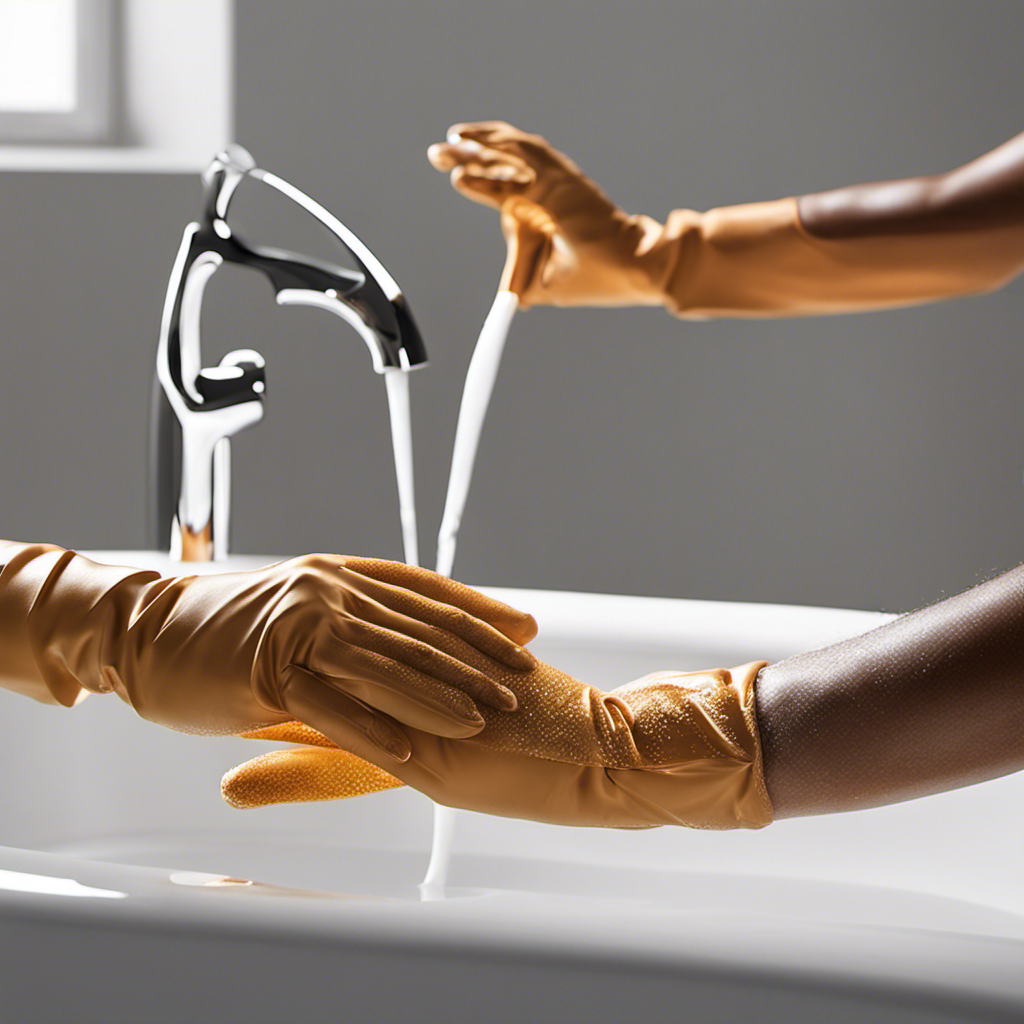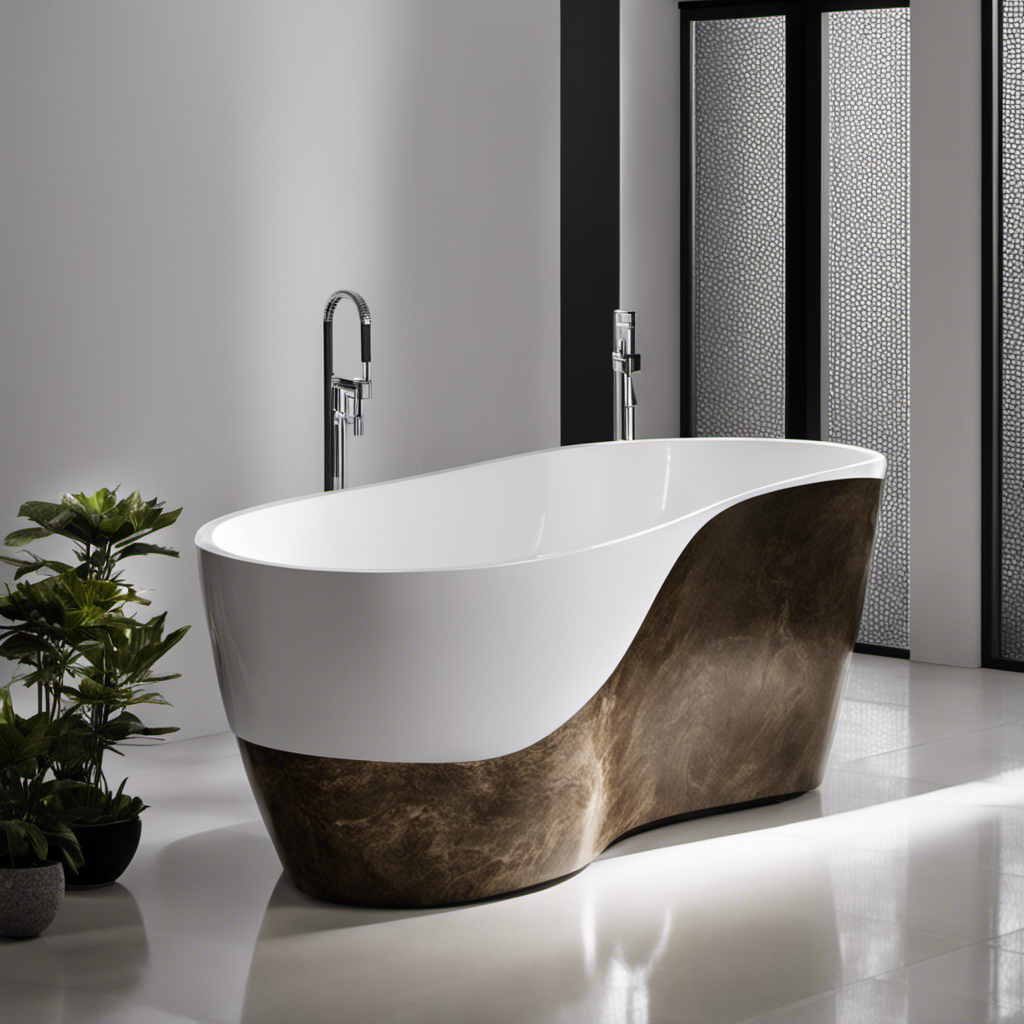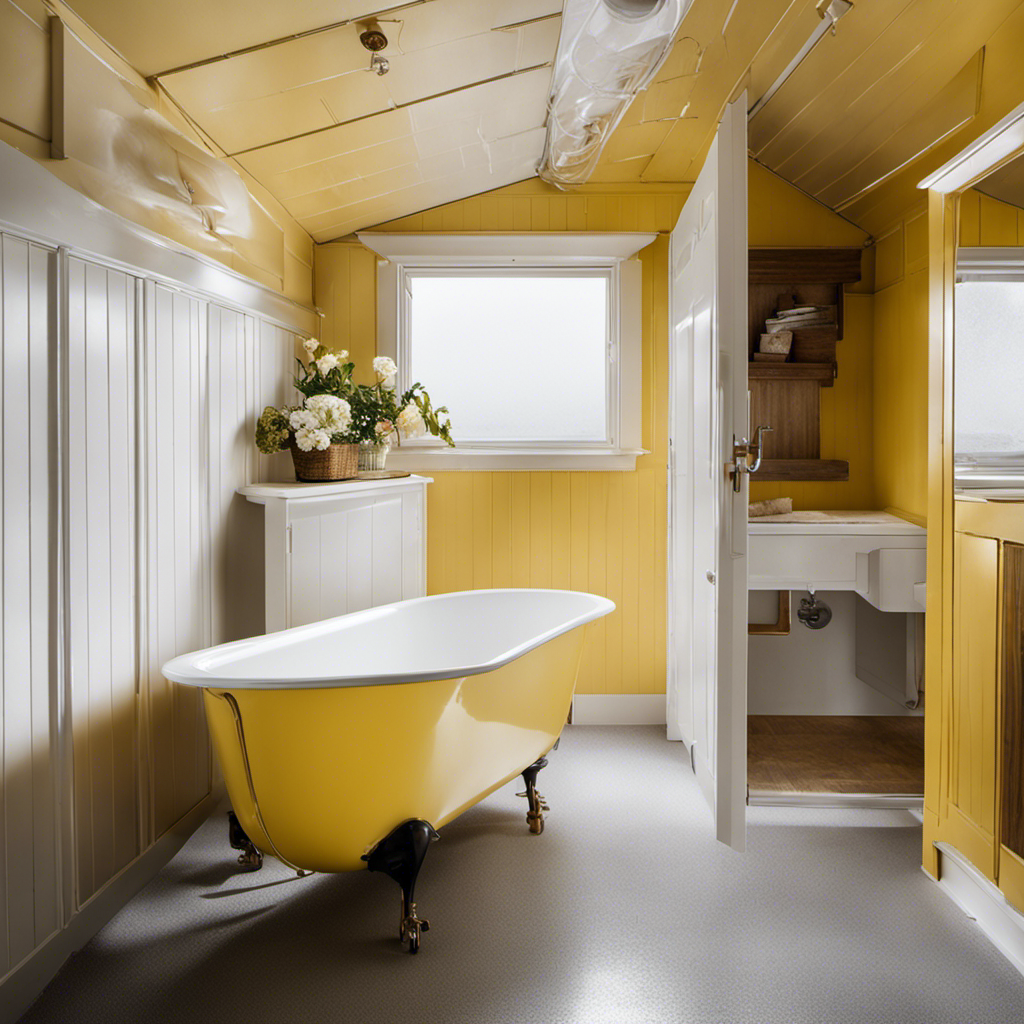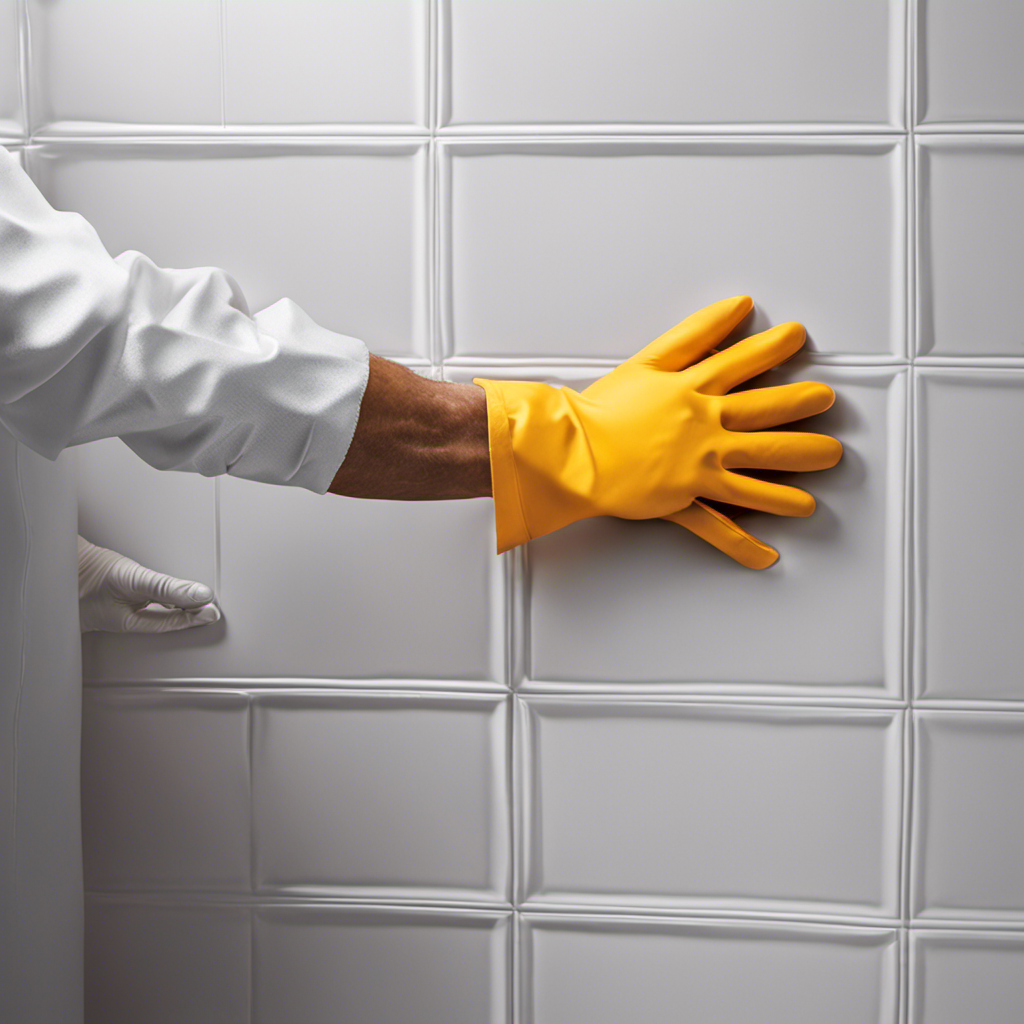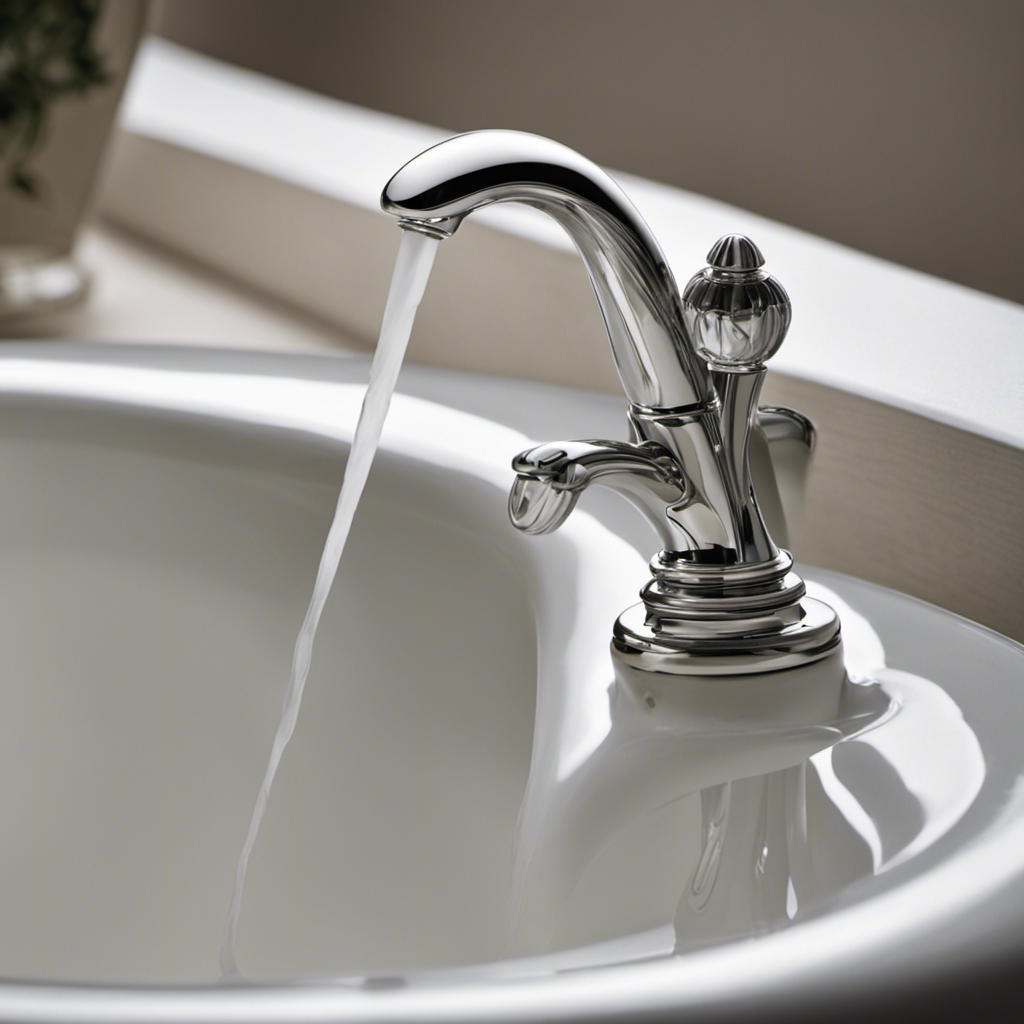Are you tired of looking at those unsightly scratches on your bathtub? Well, you’re in luck! In this step-by-step guide, we will show you how to remove those pesky scratches and restore your bathtub to its former glory.
With just a few simple materials and a little bit of elbow grease, you’ll have your bathtub looking brand new in no time.
So, let’s dive in and get started on transforming your scratched bathtub into a smooth and shiny surface you can be proud of.
Key Takeaways
- Assess the severity of the scratches before proceeding with any repair methods.
- Gather the necessary materials such as sandpaper, white vinegar, and a soft cloth.
- Choose the appropriate product or technique based on the type of material your bathtub is made of.
- Follow the steps of the scratch removal method, including cleaning the surface, applying filler, sanding, and blending with the rest of the bathtub.
Assessing the Severity of the Scratches
You’ll need to take a closer look at the scratches to determine how deep they are. Start by examining the surface of the bathtub and observe the scratches from different angles and lighting conditions. Use a flashlight if necessary.
Look for any signs of damage to the underlying material, such as cracks or exposed metal. Evaluating the damage is crucial in choosing the appropriate repair method.
If the scratches are shallow and only affect the top layer of the bathtub’s finish, you may be able to fix them with a DIY repair kit or some household items. However, if the scratches are deep and have penetrated the surface, you might need professional assistance or consider refinishing the entire bathtub.
Take your time to thoroughly assess the severity of the scratches before proceeding with the repair.
Gathering the Necessary Materials
To gather the necessary materials, start by checking if you have sandpaper, white vinegar, and a soft cloth. These items are essential for removing scratches from your bathtub effectively. Once you have gathered the materials, you can proceed to the next steps in the process.
In order to select the right scratch removal product for your bathtub, it is important to consider the type of material your bathtub is made of. Different materials may require specific products or techniques to effectively remove scratches. For example, acrylic bathtubs may require a different product than porcelain bathtubs. Research or consult with a professional to ensure you choose the appropriate product.
To minimize the appearance of scratches, there are several techniques you can try. One method is to use sandpaper to gently sand down the scratched area, smoothing out the surface. Another technique is to create a paste using white vinegar and baking soda, which can help to buff out the scratches. Apply the paste to the scratches and gently rub in circular motions with a soft cloth. Remember to always test any product or technique on a small, inconspicuous area first to ensure it does not further damage your bathtub.
Applying the Scratch Removal Method
Once you’ve gathered the necessary materials, it’s time to apply the scratch removal method to your bathtub. There are alternative bathtub repair methods available, such as DIY bathtub scratch kits, which can help you fix minor scratches without hiring a professional. Here’s a step-by-step guide to help you through the process:
-
Clean the bathtub: Before starting the repair, make sure the surface is clean and dry. Use a mild cleaning agent to remove any dirt or grime.
-
Prepare the scratch repair kit: Follow the instructions provided with the DIY kit to mix the necessary components. This usually involves combining a filler material with a hardener.
-
Apply the filler: Use a spatula or a putty knife to apply the filler mixture to the scratched area. Make sure to spread it evenly and fill the scratch completely.
-
Let it dry: Allow the filler to dry according to the instructions. This usually takes a few hours or overnight.
-
Sand the surface: Once the filler is dry, use fine-grit sandpaper to gently sand the repaired area. This will help smoothen the surface and blend it with the rest of the bathtub.
-
Polish and protect: Finally, apply a bathtub polish or wax to restore the shine and protect the repaired area from future damage.
Buffing and Polishing the Bathtub Surface
In order to restore the shine and smoothness of the surface, it’s important to buff and polish your bathtub using a soft cloth and a polishing compound. Buffing and polishing can help remove light scratches and bring back the original luster of your bathtub.
Here’s a step-by-step guide on how to buff and polish your bathtub:
-
Start by choosing the right bathtub repair kit. Look for a kit that includes a polishing compound specifically designed for bathtubs.
-
Clean the bathtub surface thoroughly with a mild detergent and warm water. Rinse it well and dry it with a clean towel.
-
Apply a small amount of the polishing compound onto a soft cloth. Gently rub the cloth onto the scratched area in circular motions. Apply light pressure and continue buffing until the scratches start to fade.
-
Once the scratches are less visible, wipe off any excess polishing compound with a clean cloth.
-
Finally, use a separate clean cloth to apply a bathtub wax or sealant to protect the surface and enhance the shine.
Maintenance Tips to Prevent Future Scratches
To prevent future damage to the surface of your bathtub, it’s important that you regularly clean and maintain it using gentle cleaners and soft cloths. Here are some maintenance tips to help you keep your bathtub in great condition:
-
Use gentle cleaners: Avoid using harsh chemicals or abrasive cleaners that can cause scratches or damage to the surface of your bathtub. Instead, opt for mild soaps or specific bathtub cleaners that are designed to be gentle on the surface.
-
Avoid abrasive materials: When cleaning your bathtub, always use soft cloths or sponges to avoid scratching the surface. Avoid using abrasive materials like steel wool or rough scrub brushes that can cause scratches or wear down the finish.
-
Regularly rinse and dry: After each use, make sure to rinse your bathtub thoroughly to remove any soap residue or dirt. Then, dry the surface with a soft cloth to prevent water spots or mineral deposits from forming.
Frequently Asked Questions
What Are Some Common Causes of Bathtub Scratches?
Scratches on your bathtub can be caused by various factors, including abrasive cleaning tools, dropping heavy objects, or using harsh chemicals. To repair these scratches, you’ll need to follow specific steps for a successful outcome.
Can Scratches in a Bathtub Be Repaired Without Professional Help?
You can definitely repair scratches in your bathtub without professional help. Buffing out bathtub scratches can make them less noticeable and improve the overall appearance of your tub.
Are There Any DIY Methods to Remove Deep Scratches From a Bathtub?
To remove deep scratches from your bathtub, there are DIY methods available. You can try using baking soda and water paste, or a mixture of vinegar and olive oil. Prevent future scratches by using bathtub mats or liners.
How Long Does It Typically Take to Remove Scratches From a Bathtub Using a Scratch Removal Method?
On average, it takes about 1-2 hours to remove scratches from a bathtub using effective methods. Start by researching bathtub scratch removal techniques and gather the necessary materials.
Are There Any Specific Cleaning Products That Should Be Avoided After Removing Scratches From a Bathtub?
After using scratch removal products on your bathtub, avoid using abrasive cleaners or harsh chemicals as they can further damage the surface. Instead, opt for alternative cleaning solutions like vinegar and baking soda to maintain the bathtub’s shine.
Conclusion
In conclusion, removing scratches from your bathtub is a simple process that can be done with a few easy steps. By assessing the severity of the scratches and gathering the necessary materials, you can effectively apply the scratch removal method.
Just like polishing a precious gem to restore its shine, buffing and polishing the bathtub surface will bring back its original luster.
Remember, regular maintenance and using preventive measures will help to keep your bathtub scratch-free for years to come, just like taking care of a cherished possession.
So don’t hesitate, follow these steps and enjoy your beautiful, scratch-free bathtub!
